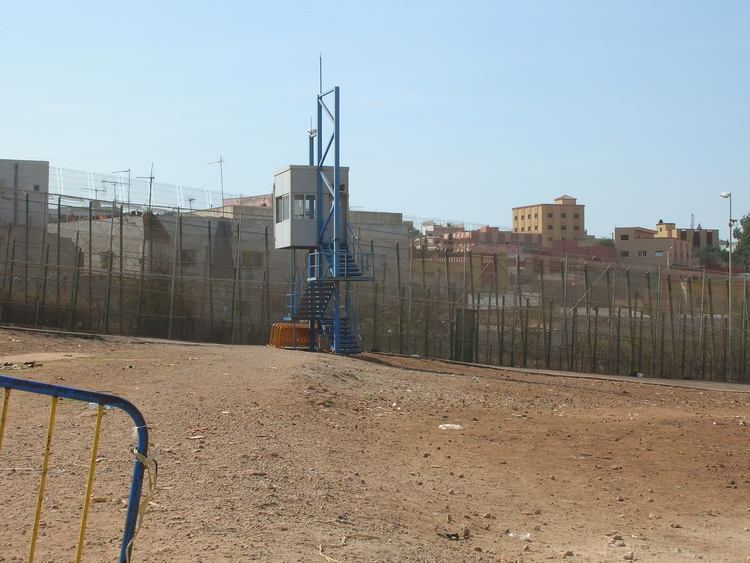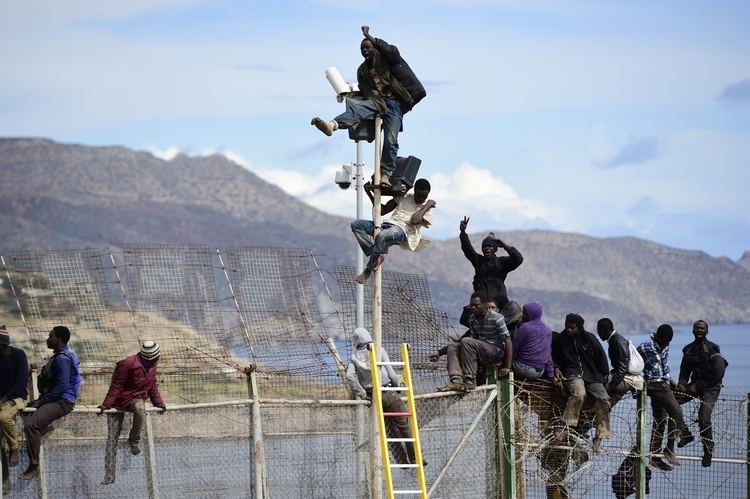 | ||
Valla melilla y ceuta ceuta and melilla border fences igeo tv
The Melilla border fence forms part of the Morocco–Spain border in the area of Melilla. Constructed by Spain, its stated purpose is to stop illegal immigration and smuggling. Morocco has objected to the construction of the barrier since it does not recognise Spanish sovereignty in Melilla.
Contents
Recent history
In September 2005 some thousands of sub-Saharan migrants tried to climb over the fences in several waves moving upon Melilla. About 700 made it past the fences while six died in clashes with Moroccan security forces. The 2005 events at the Melilla and Ceuta border fences are the subject of a documentary film, Victimes de nos richesses.

Before the third fence came to be implemented following this and similar incidents, the mountainous buffer zone between Spanish and Moroccan border patrol positions that lies next to the fence registered a hectic activity with sub-Saharan people provisionally camped there while preparing massive assaults on the fence, something which became a tactic in order to outnumber the Spanish border patrols.
Renovation

Massive intrusions of sub-Saharan people via Melilla had become a Spanish issue and, to some extent, a European Union issue. This prompted the Spanish government of José Luis Rodríguez Zapatero in 2005 to build up a third fence next to the two deteriorated existing ones, in order to completely seal the border outside of the regular checkpoints.

This third razor wire barrier cost Spain €33 million to construct. It consists of 11 km (6.8 mi) of parallel 3 m (9 ft 10 in) high fences topped with barbed wire, with regular watchposts and a road running between them to accommodate either police patrols or ambulance service in case of need. Underground cables connect spotlights, noise and movement sensors, and video cameras to a central control booth. In 2005 its height has been doubled to 6 m (19 ft 8 in) since the immigrants were climbing the previous fences equipped with home-made steps. Also, in order to facilitate the intruders' detention, devices to slow them harmlessly were added.
So far the new fence has succeeded in deterring new massive intrusions and the sub-Saharan camp sites in the buffer zone have mostly disbanded. From these, Amnesty International and Médecins Sans Frontières accused the Moroccan government of dumping people of various sub-Saharan countries (some of them claiming to be validly registered as political refugees) in an uninhabited area of the Sahara Desert without food or water supplies.
